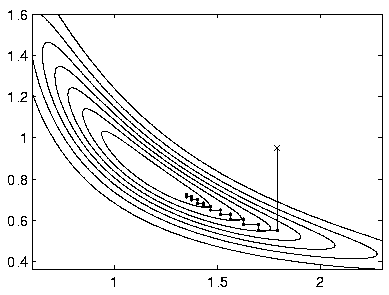![[*]](cross_ref_motif.gif) . There are two implementations of the
algorithm that differ at this point. In the Matlab version, vectors
si and
ui, matrices
Ai and
Bi and parameter vectors like
. There are two implementations of the
algorithm that differ at this point. In the Matlab version, vectors
si and
ui, matrices
Ai and
Bi and parameter vectors like
An essential part of the method is the iterative adjustment of the
posterior approximation. Learning takes place when adjusting the
network part by part using the update rules defined in
Chapter ![[*]](cross_ref_motif.gif) . There are two implementations of the
algorithm that differ at this point. In the Matlab version, vectors
si and
ui, matrices
Ai and
Bi and parameter vectors like
. There are two implementations of the
algorithm that differ at this point. In the Matlab version, vectors
si and
ui, matrices
Ai and
Bi and parameter vectors like
![]() are
updated one at a time keeping all other parts constant. In the
C++-version every node is updated by itself keeping all other nodes
constant. Updating many nodes at one time requires some further
considerations [44]. The actual experiments were run using
the Matlab version.
are
updated one at a time keeping all other parts constant. In the
C++-version every node is updated by itself keeping all other nodes
constant. Updating many nodes at one time requires some further
considerations [44]. The actual experiments were run using
the Matlab version.
Alternating updating is the method that is used in this thesis, but
it is not the only option. Figure ![[*]](cross_ref_motif.gif) shows a
simple example, where it is not very effective, since it leads to a
zig-zag path. One option could be to sweep through many updates
once and then optimise the length of the step in the direction of the
whole sweep. This is further discussed in
Chapter
shows a
simple example, where it is not very effective, since it leads to a
zig-zag path. One option could be to sweep through many updates
once and then optimise the length of the step in the direction of the
whole sweep. This is further discussed in
Chapter ![[*]](cross_ref_motif.gif) .
.
 |
The alternating adjustment can be compared to the expectation maximisation (EM) algorithm [13]. The EM algorithm alternates between two types of adjustment steps in which the other part is kept constant.